[ad_1]
Most students attend a college that’s relatively close to home, making location — alongside affordability and academic offerings — one of the most important factors in where students end up enrolling.
So while it’s interesting to read about the country’s best colleges, it’s perhaps more important for prospective students to pay attention to the outcomes of colleges in your area.
To help, Money breaks down our value-focused Best Colleges rankings by geography, slicing them by region and by state. Below is the highest-scoring college in each state, taken from our main colleges ranking and our selective colleges ranking. (There are no colleges listed for Alaska, Montana or New Mexico because no four-year college in those states made our initial screening of having a higher than average graduation rate. For an in-depth explanation of how Money ranks colleges, read our methodology.)
Like our overall rankings, the Best College in Every State offers a mix of liberal arts colleges and STEM schools, large public research universities and small private campuses. All but nine of the colleges score in the top half on Money’s analysis, and 26 land in the top 10%.
Read about the winners below, then head to our college search tool to learn about other high-value colleges in your home state.
Alabama – Auburn University
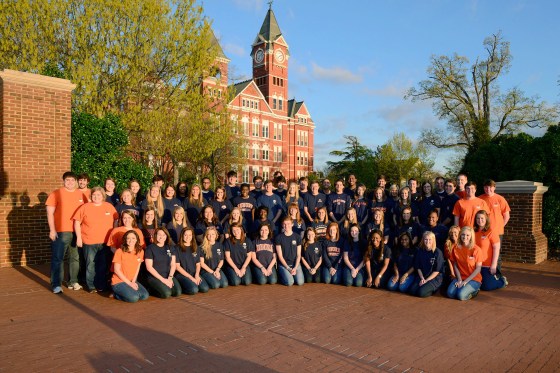
- Money rank: No. 297
- Est. price for students who receive financial aid: $25,400
- Graduation rate: 78%
- Median early career earnings: $56,930
Football and Greek life are major parts of the campus scene at this public research university. In the realm of academics, Auburn offers more than 150 different majors, including well-known programs in engineering fields and animal sciences.
Alaska – Not in the rankings.
No four-year colleges in Alaska met the requirements to be included in this year’s rankings. Read more about our methodology here.
Arizona – Arizona State University
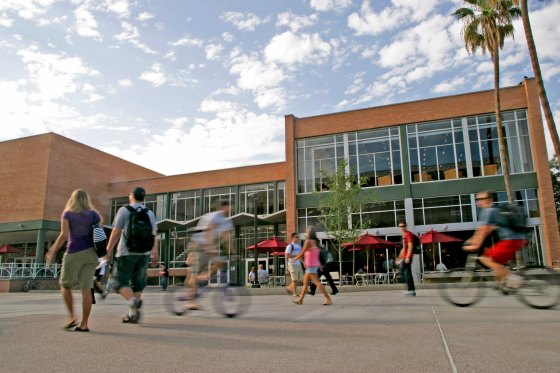
- Money rank: No. 147
- Est. price for students who receive financial aid: $15,500
- Graduation rate: 66%
- Median early career earnings: $55,750
Arizona State University has made a name for itself as a leading innovator in the higher education space. The university offers several successful accelerated degrees that help students graduate faster, an online personality quiz that helps students find majors and careers that fit their interests, and an online advising tool to help students stay on track. Plus, it’s a world-class research university, too.
Arkansas – John Brown University
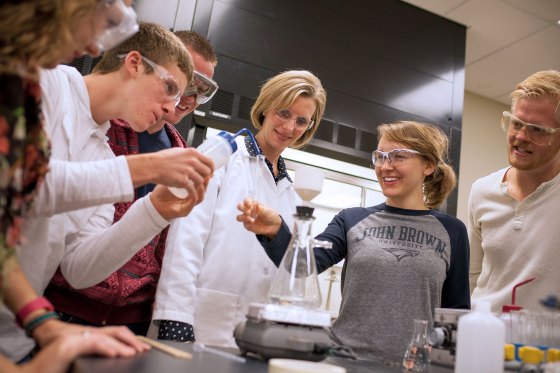
- Money rank: No. 129
- Est. price for students who receive financial aid: $22,800
- Graduation rate: 65%
- Median early career earnings: $51,790
About three-quarters of students receive financial aid to lower the price of the attendance at this small Christian university in the northwest part of the state. The most popular majors at JBU are nursing, psychology, family and human services, kinesiology, and graphic design.
California – Stanford University
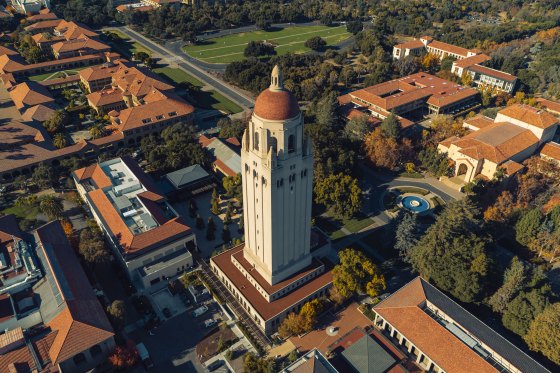
- Money rank: No. 3 on the Best Selective Colleges
- Est. price for students who receive financial aid: $21,100
- Graduation rate: 94%
- Median early career earnings: $97,800
Stanford is one of the hardest schools in the country to get into, accepting less than 5% of applicants. If you manage to get in, you’ll have access to a faculty that features an array of innovative and important thinkers, including 20 Nobel laureates, 20 MacArthur fellows and three Pulitzer Prize winners.
Colorado – Colorado School of Mines

- Money rank: No. 59
- Est. price for students who receive financial aid: $21,100
- Graduation rate: 94%
- Median early career earnings: $97,800
Also referred to as just Mines, this small public research university focuses on engineering, applied science and what it calls a “mission to enhance understanding of the earth, energy and the environment.” One college fun fact: Rather than a paper diploma, graduates of Mines receive a silver diploma engraved with their degree.
Connecticut – Yale University
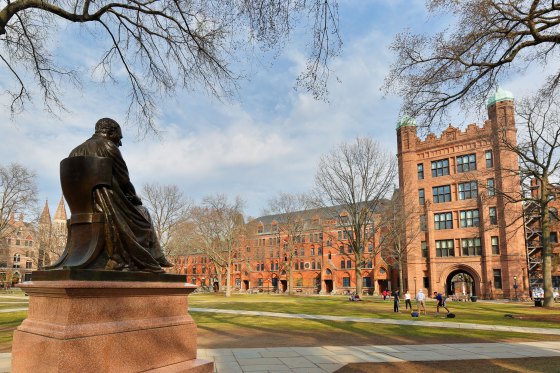
- Money rank: No. 4 on the Best Selective Colleges
- Est. price for students who receive financial aid: $18,500
- Graduation rate: 97%
- Median early career earnings: $88,660
Yale offers students a traditional liberal arts education. There are no specific course requirements, but undergraduates must take courses in a wide variety of subjects and demonstrate strong skills in writing and quantitative reasoning.
Delaware – University of Delaware
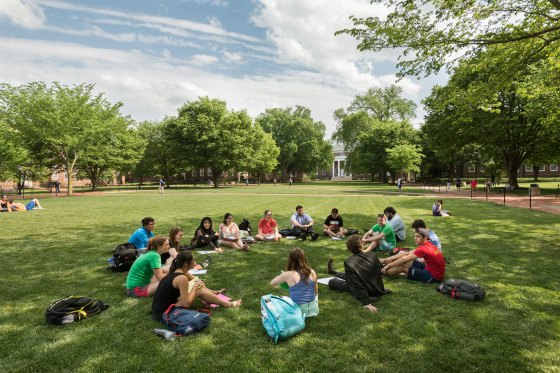
- Money rank: No. 103
- Est. price for students who receive financial aid: $20,900
- Graduation rate: 79%
- Median early career earnings: $67,300
Nearly 100 years ago, a professor at the University of Delaware helped launch the nation’s first study abroad program when he sailed to France with a small group of students. Today, U-Del offers international study programs in more than 40 countries, and about 30% of undergraduates participate.
Florida – University of Florida
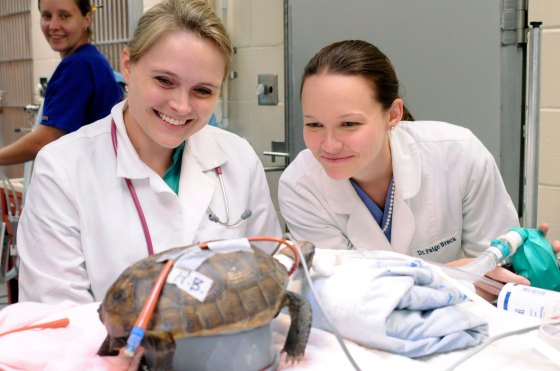
- Money rank: No. 8
- Est. price for students who receive financial aid: $10,600
- Graduation rate: 88%
- Median early career earnings: $64,460
The University of Florida’s 2,000-acre campus features live alligators, a 157-foot carillon tower, a butterfly rainforest, free Gatorade in the Student Health Care Center, and of course: the Swamp, which fills with more than 80,000 football fans on Saturdays in the fall.
Georgia – Georgia Institute of Technology
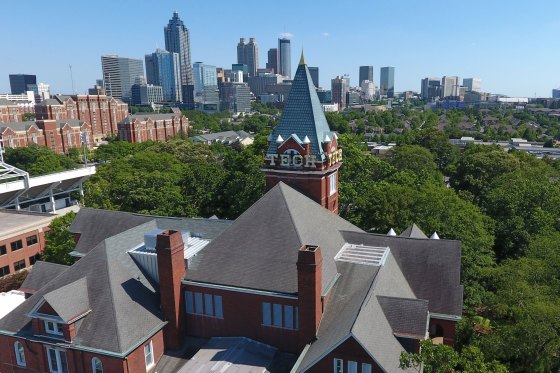
- Money rank: No. 6
- Est. price for students who receive financial aid: $18,400
- Graduation rate: 87%
- Median early career earnings: $88,200
Georgia Tech is one of the country’s best engineering schools. Regardless of what they major in, students have ample opportunities to assist in faculty research, as well as pursue wide-ranging minors like Korean, science fiction studies and naval science.
Hawaii – University of Hawaii at Manoa

- Money rank: No. 397
- Est. price for students who receive financial aid: $16,000
- Graduation rate: 59%
- Median early career earnings: $52,860
Students at Hawaii’s flagship public university can take advantage of its prime location to study Pacific Island culture, tropical agriculture, marine science, volcanology and international business. (Not to mention its location near world-class beaches gives students a prime destination for a study break.)
Idaho – University of Idaho
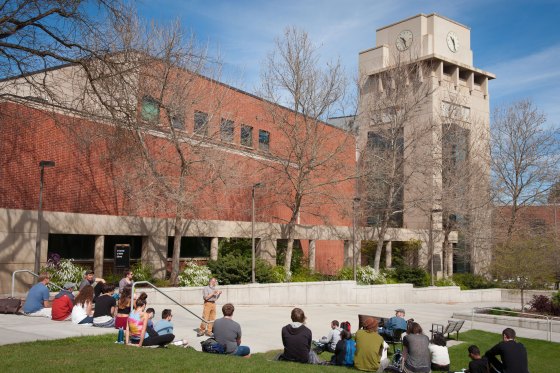
- Money rank: No. 399
- Est. price for students who receive financial aid: $15,800
- Graduation rate: 59%
- Median early career earnings: $48,270
Popular areas of study at the University of Idaho include business, engineering, and national resources and conservation. Students across majors are encouraged to get involved with undergraduate research, and when they leave the lab or the library, the university’s Moscow campus places them close to a variety of nearby outdoor activities to keep them busy.
Illinois – Northwestern University
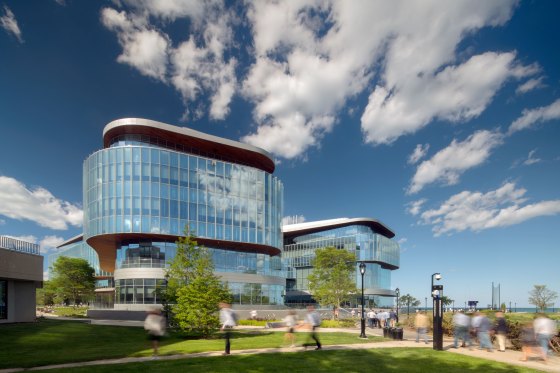
- Money rank: No. 11 on the Best Selective Colleges
- Est. price for students who receive financial aid: $29,900
- Graduation rate: 95%
- Median early career earnings: $80,030
Northwestern’s campus in Evanston is divided between the creative arts and journalism students on its south end and the engineering and pre-professional schools to the north. Its academic year, meanwhile, is divided into quarters rather than semesters.
Indiana – University of Notre Dame
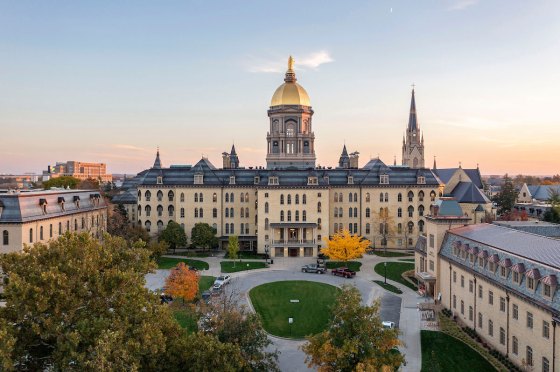
- Money rank: No. 12 on the Best Selective Colleges
- Est. price for students who receive financial aid: $31,700
- Graduation rate: 97%
- Median early career earnings: $88,960
Notre Dame is highly selective, reporting that almost 90% of its students were in the top 10% of their high school classes. The university is well known for its humanities and business programs, but it also has strong science departments and a grueling pre-med track for aspiring doctors.
Iowa – Iowa State University
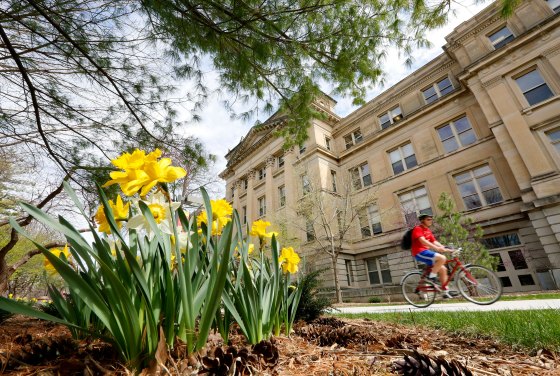
- Money rank: No. 34
- Est. price for students who receive financial aid: $17,000
- Graduation rate: 74%
- Median early career earnings: $57,350
Iowa State has an excellent agricultural college (as you might expect), as well as strong math and science departments. In Money’s rankings, it stands out for affordability. The net price of a degree for in-state students, as calculated by Money, is about $73,000.
Kansas – Baker University

- Money rank: No. 279
- Est. price for students who receive financial aid: $24,500
- Graduation rate: 57%
- Median early career earnings: $56,800
In a tradition that dates back to 1891, freshmen at this small private university are assigned to one the four class organizations: King Arthur’s Court, House of Hanover, Columbian Commonwealth or Senatus Romanus. Incoming freshmen officially enter campus on Traditions Night through their “class gate” and when they graduate, they leave through the same gate, then bequeath the class name to the next incoming class.
Kentucky – Berea College
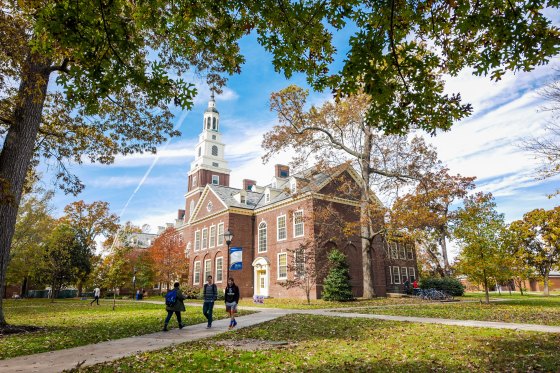
- Money rank: No. 20
- Est. price for students who receive financial aid: $5,200
- Graduation rate: 63%
- Median early career earnings: $37,150
Berea captures the number one spot on affordability measures in Money’s rankings. Part of the work college consortium, Berea doesn’t charge any tuition. Instead, students can receive a Berea Work Scholarship to help pay their way, and all students are required to work a minimum of 10 hours a week, for which they take home a paycheck to help cover day-to-day expenses.
Louisiana – Louisiana State University

- Money rank: No. 408
- Est. price for students who receive financial aid: $21,500
- Graduation rate: 64%
- Median early career earnings: $56,810
School spirit is serious business at LSU. Students pack the university’s football stadium, known as Death Valley, in the fall, and the university’s mascot, Mike the Tiger, is a live Bengal tiger donated from a rescue facility. He lives in a 15,000-square-foot habitat on campus.
Maine – Bowdoin College
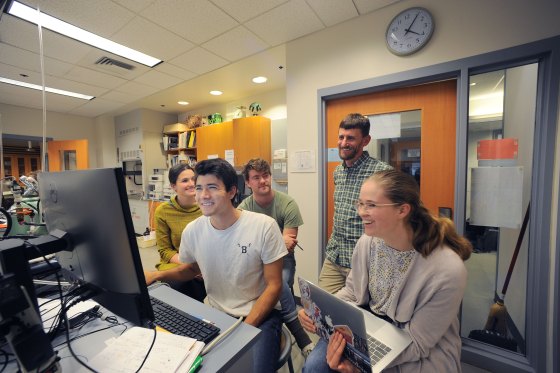
- Money rank: No. 18 on the Best Selective Colleges
- Est. price for students who receive financial aid: $27,100
- Graduation rate: 95%
- Median early career earnings: $66,860
Bowdoin has been test-optional long before it was en vogue: Prospective students haven’t been required to submit SAT or ACT scores in more than 50 years. Still, the college is highly selective, accepting less than 9% of applicants in 2021.
Maryland – Johns Hopkins University
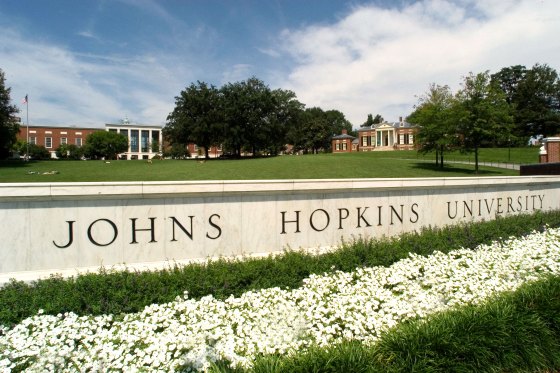
- Money rank: No. 27 on the Best Selective Colleges
- Est. price for students who receive financial aid: $26,700
- Graduation rate: 93%
- Median early career earnings: $83,290
In 1889, Johns Hopkins researchers introduced the idea of using rubber gloves during surgery, More than 130 years later, the university is still well known for its pre-med programs and faculty still regularly play a role in world-class inventions and innovations.
Massachusetts – Massachusetts Institute of Technology

- Money rank: No. 1 on the Best Selective Colleges
- Est. price for students who receive financial aid: $21,100
- Graduation rate: 94%
- Median early career earnings: $111,220
One of the world’s most respected science schools, MIT puts students through a grueling workload, with physics, biology, chemistry and calculus all as required courses. Professors are at the top of their game, with 11 Nobel laureates currently on the faculty.
Michigan – University of Michigan
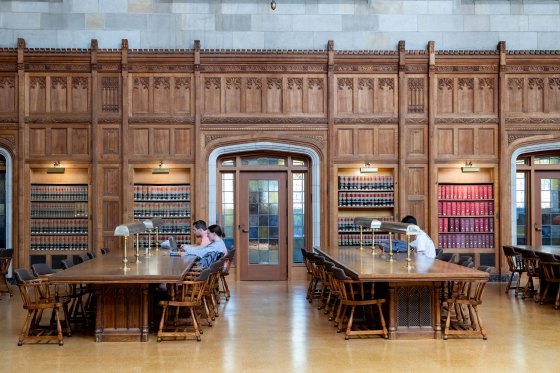
- Money rank: No. 1
- Est. price for students who receive financial aid: $18,800
- Graduation rate: 93%
- Median early career earnings: $75,840
Michigan, Money’s No. 1 ranked college for 2022, has plenty to brag about. Among its academic accomplishments: The National Science Foundation ranks Michigan as the top public research university in terms of money spent on research and development, a position the school has held since 2010.
Minnesota – St. Olaf College
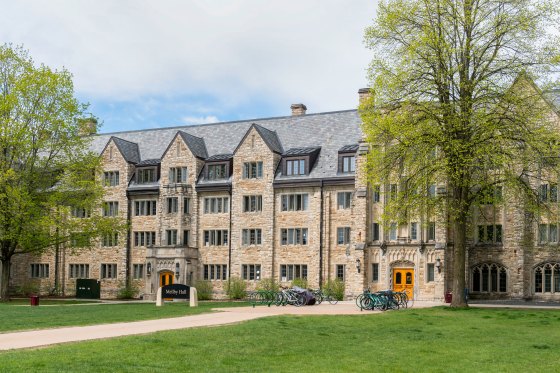
- Money rank: No. 33
- Est. price for students who receive financial aid: $29,400
- Graduation rate: 86%
- Median early career earnings: $60,240
A small private college in southeastern Minnesota, St. Olaf College is particularly well known for its music department, but the liberal arts school offers a broad range of majors. Aside from music, popular ones in recent years include biology, economics, psychology and chemistry.
Mississippi – University of Mississippi
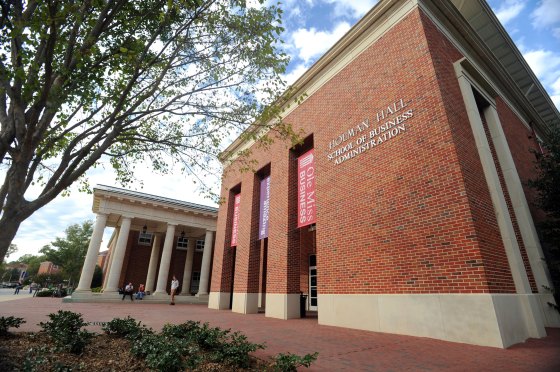
- Money rank: No. 360
- Est. price for students who receive financial aid: $14,300
- Graduation rate: 63%
- Median early career earnings: $48,260
Among the unique collections housed in the University of Mississippi’s libraries are the William Faulkner Archives, which include drafts of poems, short stories, film scripts and novels from the Nobel-Prize winning author, who lived near the campus for much of his life.
Missouri – Washington University in St. Louis
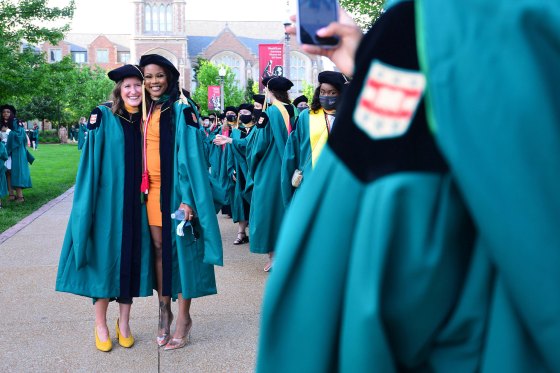
- Money rank: No. 26 on the Best Selective Colleges
- Est. price for students who receive financial aid: $28,800
- Graduation rate: 94%
- Median early career earnings: $82,730
Academics are rigorous at this private research university, where popular majors include biology, finance, computer science, engineering and experimental psychology. Outside of class, students can participate in one (or more) of 480 student organizations, as well as explore the vibrant city of St. Louis.
Montana – Not in the rankings.
No four-year colleges in Montana met the requirements to be included in this year’s rankings. Read more about our methodology here.
Nebraska – University of Nebraska-Lincoln
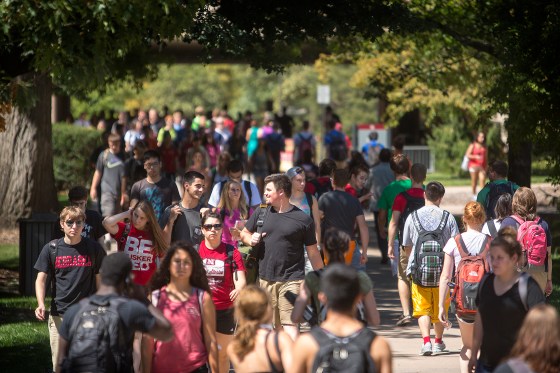
- Money rank: No. 236
- Est. price for students who receive financial aid: $18,300
- Graduation rate: 64%
- Median early career earnings: $52,360
With a mascot named Herbie the Husker and a team dubbed the Cornhuskers, it’s little surprise that Nebraska boasts top-notch agricultural sciences and natural resources programs. But the state’s largest public university also has strong engineering, fine arts and journalism programs.
Nevada – University of Nevada – Reno
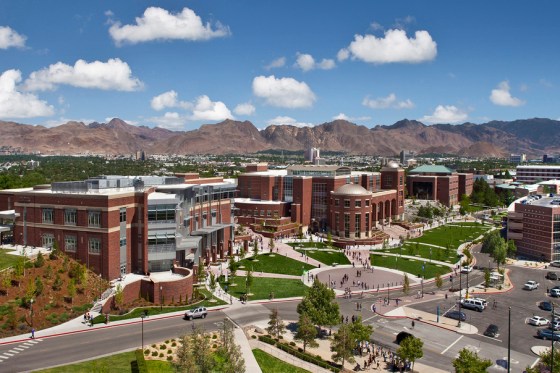
- Money rank: No. 353
- Est. price for students who receive financial aid: $17,300
- Graduation rate: 61%
- Median early career earnings: $55,360
The largest majors at the University of Nevada at Reno include business, biology, engineering and psychology – fairly standard popular majors at campuses across the country. But UNR’s journalism school is also among its most popular. The school has produced six Pulitzer Prize winners and is home to an award-winning student newspaper.
New Hampshire – Dartmouth College
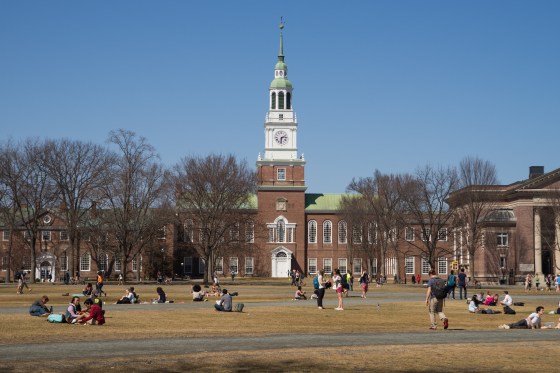
- Money rank: No. 15 on the Best Selective Colleges
- Est. price for students who receive financial aid: $25,900
- Graduation rate: 95%
- Median early career earnings: $91,630
The smallest school in the Ivy League, Dartmouth places an emphasis on undergraduate learning. The campus is home to a vibrant Greek life scene — about half of students participate in a fraternity or sorority – as well as the Dartmouth Outing Club, the oldest collegiate group for outdoor recreation in the country.
New Jersey – Princeton University
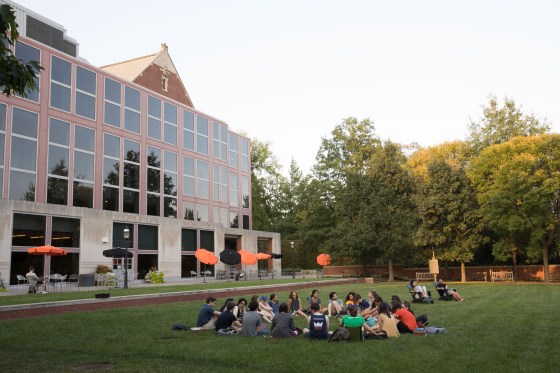
- Money rank: No. 2 on the Best Selective Colleges
- Est. price for students who receive financial aid: $19,700
- Graduation rate: 96%
- Median early career earnings: $95,690
Like any Ivy League, Princeton is exceedingly tough to get into. But if you’re admitted, you’ll get access to one of the country’s most generous financial aid programs. The school gives out such large grants to the six in 10 families who qualify (households earning less than $250,000 generally get some aid; those making less than $65,000 get a free ride) that more than 80% of students graduate without debt.
New Mexico – Not in the rankings.
No four-year colleges in New Mexico met the requirements to be included in this year’s rankings. Read more about our methodology here.
New York – Cornell University
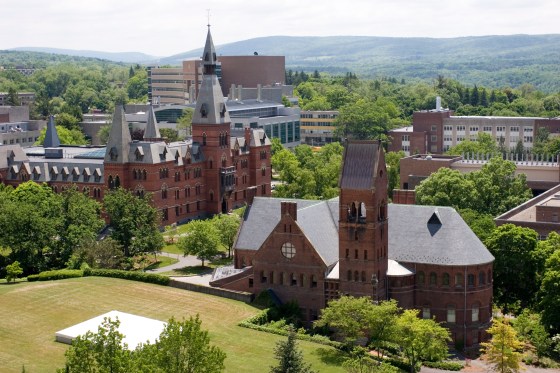
- Money rank: No. 16 on the Best Selective Colleges
- Est. price for students who receive financial aid: $29,100
- Graduation rate: 94%
- Median early career earnings: $91,180
The largest college in the Ivy League, Cornell has a highly respected College of Arts & Sciences, as well as architecture and hotel administration programs that are considered leaders in their respective fields. New York state residents can also enroll in the university’s colleges of Agriculture and Life Sciences, Industrial and Labor Relations or Human Ecology and pay about $20,000 a year less than the tuition charged by the rest of the university.
North Carolina – University of North Carolina at Chapel Hill
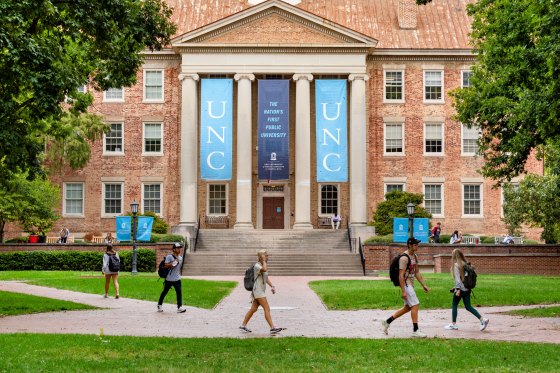
- Money rank: No. 2
- Est. price for students who receive financial aid: $10,600
- Graduation rate: 89%
- Median early career earnings: $61,920
The University of North Carolina at Chapel Hill, the nation’s first public university, has long been known as one of the best bargains for a competitive school. Among the strongest departments at UNC are biology and other sciences, traditional liberal arts such as religious studies, and journalism.
North Dakota – North Dakota State University
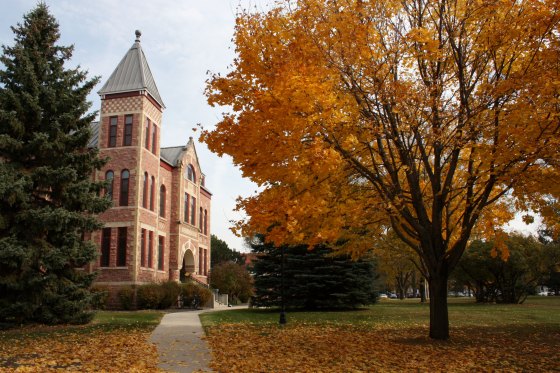
- Money rank: No. 246
- Est. price for students who receive financial aid: $17,600
- Graduation rate: 57%
- Median early career earnings: $56,250
NDSU was founded in 1890 as North Dakota Agricultural College, and true to its heritage, agriculture and animal sciences remain two popular academic disciplines. Students today also flock to the university’s business, nursing and engineering programs.
Ohio – Ohio State University

- Money rank: No. 145
- Est. price for students who receive financial aid: $19,900
- Graduation rate: 83%
- Median early career earnings: $55,330
With about 45,000 undergraduates, Ohio State is one of the largest universities in the nation. Sports, particularly cheering on the Buckeyes football players, is a huge part of campus culture, and it connects alumni across the country long after they leave campus.
Oklahoma – Oklahoma State University
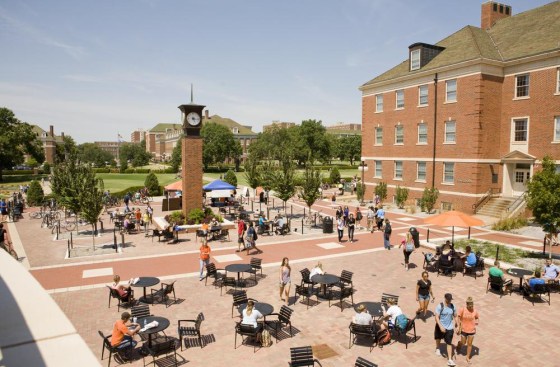
- Money rank: No. 208
- Est. price for students who receive financial aid: $15,600
- Graduation rate: 61%
- Median early career earnings: $52,700
Oklahoma State describes itself as, “Not too big. Not too small. Just right.” With about 20,000 undergraduates, students have access to the resources and reach of a large public university, like 200 undergraduate majors and minors to choose from. More than 500 student organizations, including 13 living-learning communities that combine residence halls with academic interests, help students find their own circle.
Oregon – University of Portland
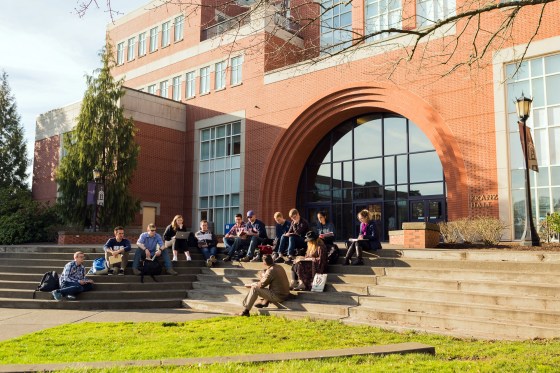
- Money rank: No. 212
- Est. price for students who receive financial aid: $39,400
- Graduation rate: 81%
- Median early career earnings: $71,540
A private Catholic university, UP sits on a bluff that overlooks the Willamette River on the outskirts of Oregon’s largest city. The setting means the university doesn’t feel like an urban campus, though it still offers all the advantages of one, like access to top internships year-round.
Pennsylvania – University of Pennsylvania
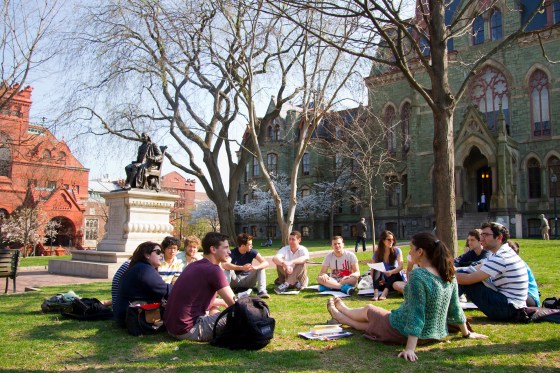
- Money rank: No. 8 on the Best Selective Colleges
- Est. price for students who receive financial aid: $25,500
- Graduation rate: 95%
- Median early career earnings: $103,250
Although it’s known for typically having one of the largest freshman classes in the Ivy League (about 2,400 students), the University of Pennsylvania is still wildly tough to get into. Its acceptance rate for the class of 2025 was a record low: less than 6%.
Rhode Island – Brown University
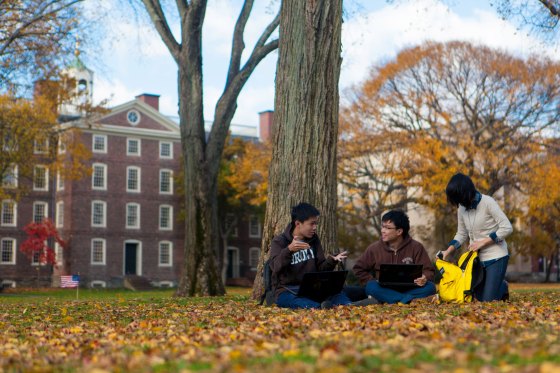
- Money rank: No. 21 on the Best Selective Colleges
- Est. price for students who receive financial aid: $29,200
- Graduation rate: 95%
- Median early career earnings: $78,940
Brown gives students a lot of freedom to design their own academic experience. Students are required to take two writing classes, but otherwise undergrads can choose whatever courses interest them at Brown, or at the Rhode Island School of Design just down College Hill.
South Carolina – Citadel Military College of South Carolina
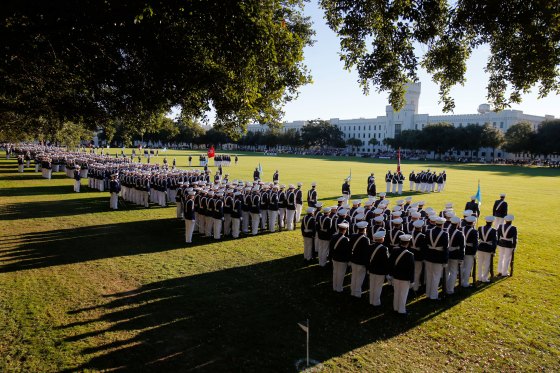
- Money rank: No. 78
- Est. price for students who receive financial aid: $18,900
- Graduation rate: 71%
- Median early career earnings: $67,770
The Citadel is one of the six senior military colleges in the U.S. But unlike the country’s five service academies, its graduates are not required to serve in the armed forces upon graduation. Still, campus life is very regimented: Students wear uniforms and march in military formations.
South Dakota – Augustana University
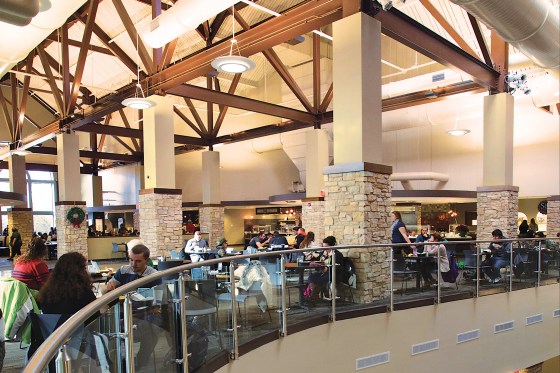
- Money rank: No. 352
- Est. price for students who receive financial aid: $25,700
- Graduation rate: 70%
- Median early career earnings: $50,140
Almost all students at this private liberal arts college receive some kind of grant to reduce the price of attendance. Students looking for an extra-rigorous academic experience can apply to be a part of the university honors program, called Civitas, which requires specific classes on religion and theology, plus a junior-year project.
Tennessee – Vanderbilt University
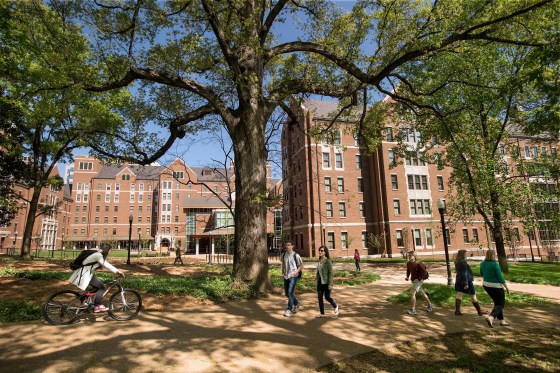
- Money rank: No. 23 on the Best Selective Colleges
- Est. price for students who receive financial aid: $27,200
- Graduation rate: 93%
- Median early career earnings: $79,870
One of the most elite colleges in the South, Vanderbilt has a world-class medical school, and as a result, its pre-med undergraduates receive advising and research opportunities that lead to a 70% medical school acceptance rate. For students who aren’t interested in medicine, Vanderbilt’s liberal arts, humanities and education programs are also top-notch.
Texas – Rice University
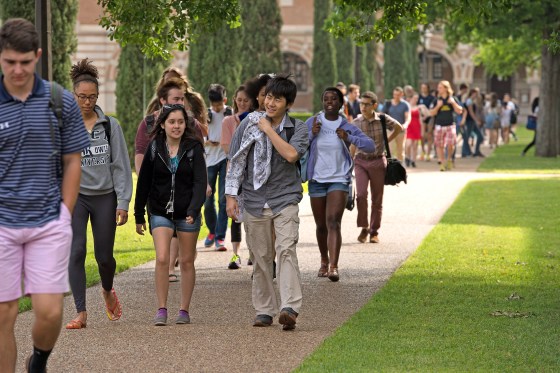
- Money rank: No. 17 on the Best Selective Colleges
- Est. price for students who receive financial aid: $20,300
- Graduation rate: 94%
- Median early career earnings: $77,680
Most classes are small at this Houston-based private university, and undergraduates have opportunities to work alongside some of the world’s top researchers. Popular majors include social sciences, engineering and natural sciences, though Rice offers more than 80 undergrad programs in all.
Utah – University of Utah
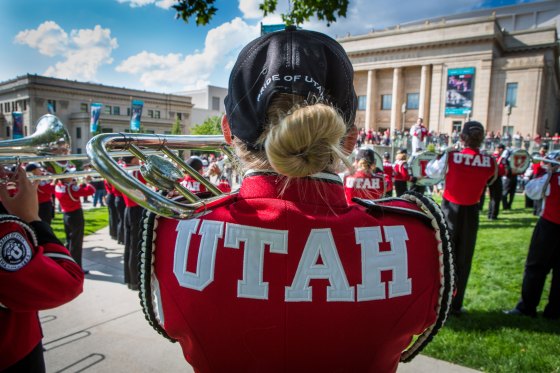
- Money rank: No. 121
- Est. price for students who receive financial aid: $13,600
- Graduation rate: 57%
- Median early career earnings: $60,590
This public university in the state’s capital is comparatively affordable for in-state students. The estimated net price of a degree, as calculated by Money, is just over $90,000 — cheaper than 90% of the colleges in Money’s ranking.
Vermont – Middlebury College
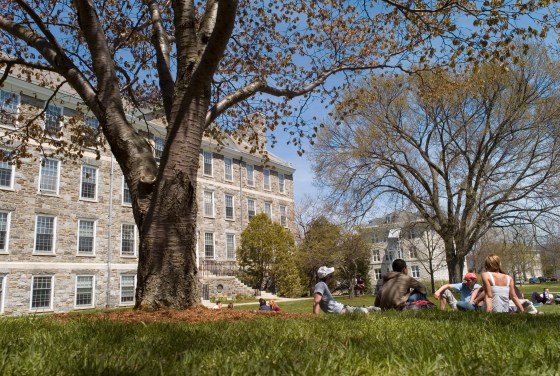
- Money rank: No. 42 on the Best Selective Colleges
- Est. price for students who receive financial aid: $25,900
- Graduation rate: 91%
- Median early career earnings: $65,930
A prestigious liberal arts college, Middlebury is known for promoting gap semesters or years, which allow students to defer freshman year enrollment in order to travel, work or volunteer. There’s even an entire February admissions cohort made up of students who choose to start college in the spring rather than the fall.
Virginia – University of Virginia
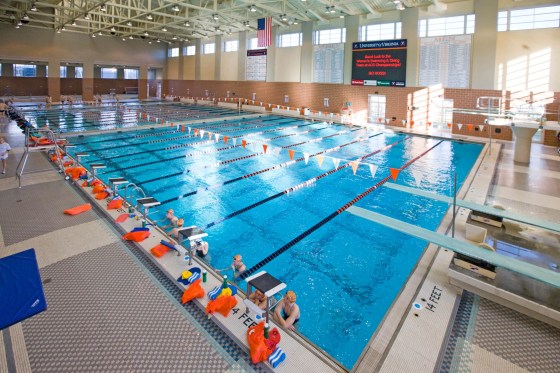
- Money rank: No. 3
- Est. price for students who receive financial aid: $20,100
- Graduation rate: 94%
- Median early career earnings: $77,050
Known as a “public Ivy,” the University of Virginia offers in-state students an outstanding education at a reasonable price. The university boasts the highest graduation rate of any public college plus a beautiful campus, designed by founder Thomas Jefferson, that’s designated as a UNESCO World Heritage Site.
Washington – University of Washington – Seattle
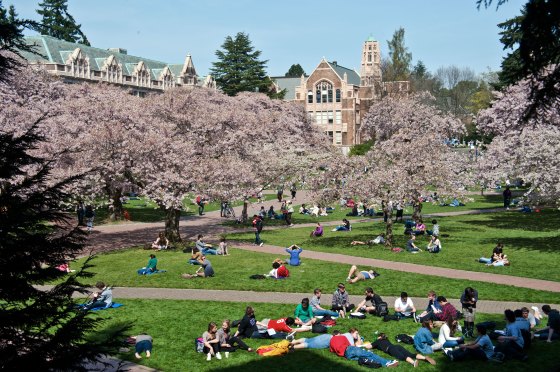
- Money rank: No. 26
- Est. price for students who receive financial aid: $10,200
- Graduation rate: 83%
- Median early career earnings: $68,930
The flagship Seattle campus of the University of Washington has grown into a research and science powerhouse, with close ties to major companies like Amazon, Microsoft and Boeing (all of which are headquartered close to campus). UW has solid admissions odds for such a top-rated, well-connected school: Just over half of applicants get in.
West Virginia – West Virginia University
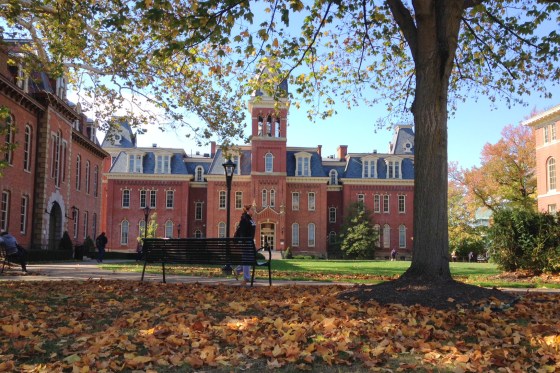
- Money rank: No. 520
- Est. price for students who receive financial aid: $13,800
- Graduation rate: 58%
- Median early career earnings: $51,780
For in-state students, West Virginia University offers one of the country’s most affordable educations, according to Money’s analysis. Popular majors run the gamut from animal sciences and criminology to journalism and psychology. Many Mountaineers also pursue nursing degrees.
Wisconsin – University of Wisconsin-Madison

- Money rank: No. 17
- Est. price for students who receive financial aid: $14,800
- Graduation rate: 87%
- Median early career earnings: $65,210
Students at UW-Madison have more than 9,000 courses to choose from, plus hundreds of clubs and intramural athletics to keep them busy. Add in a charming college town and competitive, Division I collegiate teams, and you’ve got an idea of the Badger appeal.
Wyoming – University of Wyoming
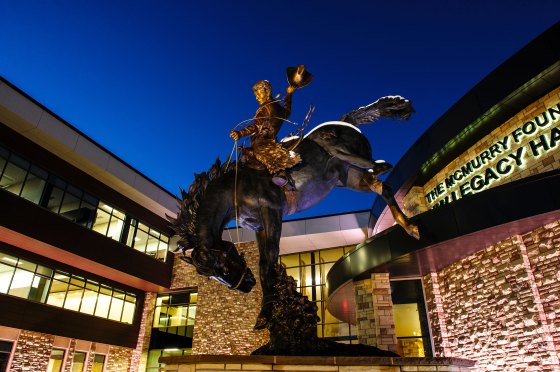
- Money rank: No. 289
- Est. price for students who receive financial aid: $12,900
- Graduation rate: 55%
- Median early career earnings: $50,690
The only four-year college in the state, the University of Wyoming accepts nearly all students who apply. Along with lecture halls, labs and libraries, the campus is home to multiple museums, including the American Heritage Center, which, among other things, holds manuscripts and materials about the history of Wyoming and the American West.
This story has been updated to correct images of Ohio State University and Oklahoma State University.
More from Money:
4 Tips for Finding the Best College for You
No SAT, No Problem? How Test-Optional Policies Are Changing College Admissions
© Copyright 2021 Ad Practitioners, LLC. All Rights Reserved.
This article originally appeared on Money.com and may contain affiliate links for which Money receives compensation. Opinions expressed in this article are the author’s alone, not those of a third-party entity, and have not been reviewed, approved, or otherwise endorsed. Offers may be subject to change without notice. For more information, read Money’s full disclaimer.
The views and opinions expressed herein are the views and opinions of the author and do not necessarily reflect those of Nasdaq, Inc.
[ad_2]
Source link


